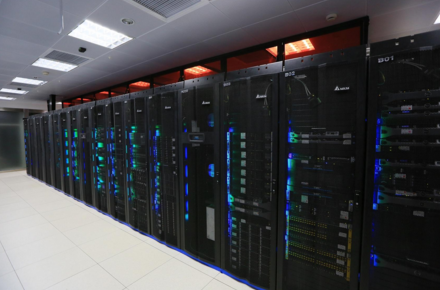Jiangsu Huatal Cooling Technology., Ltd.
Complimentary Samples For You And Technical Consultation At Your Convenience
For a long time, the design of cost-effective cooling system to ensure that the system can work reliably is an increasingly important problem for data centers. Over the past decade, the power density of server racks has increased rapidly, as has the energy consumed by servers. Ten years ago, the energy consumption of a single server rack was between 250 W and 1.5 kW. Today, the energy consumption of a single server rack is closer to 10 kW. Over the next decade, energy consumption is expected to reach 50 kW or more. It is estimated that by 2020, the total number of data center industry will be equal to the aviation industry, so the prospect of this industry is considerable, and it is a great challenge for the cooling design of data center. Traditionally, data centers use air to dissipate heat. However, it is inefficient and costly to make cool air pass through the server scaffolding to eliminate heat. Up to 60% of the cooling air is lost due to bypasses and mixing with the warm air, and the cooling system can cost more to run than the servers. With the increasing speed of computer servers and the increasing density of data center racks, the idea of adequate cooling through air flow is no longer realistic.

With the development of technology, the heat flux density generated by electronic equipment is increasing. At this time, the traditional air cooling technology can no longer meet the needs of heat dissipation in high heat flux density occasions, so the use of closed cooling tower is increasing. The general range of the air forced convection heat transfer coefficient is 20 ~ 100W/(m2 · K). The heat transfer coefficient of the liquid (such as water) forced convection is up to 15000W/(m2 · K), which is more than 100 times of the air forced convection heat transfer coefficient. Therefore, the cooling capacity of the closed cooling tower system is much stronger than that of the air cooling. In today's data center industry, more and more server manufacturers are turning to use closed cooling tower cooling technology to achieve economical and effective thermal management. In order to better meet the needs of data center operation, cooling system applications are moving towards modularization for ease of use and maintenance, and to prevent leakage, leakage and overflow during server replacement. In specific applications, a typical liquid cooling system for a server typically consists of a plate heat exchanger mounted directly on a server microprocessor, CPU, or other heat concentration area. The heat exchanger transfers heat from the CPU to a circulating liquid normally composed of cooling fluids such as water and glycol. Liquid at a lower temperature or room temperature is supplied to the plate heat exchanger, and the heat-absorbing liquid is transported out through a flexible tube and eventually flows to the central liquid-air or liquid-liquid heat exchanger. The connecting device or method may be a small part of the overall system, but the connection and disconnection of the fluid pipe is an important factor in ensuring the successful application of the liquid cooling system in the data center.
In the data center industry, the use of liquid for computer cooling dates back to the mid-1960s, when IBM implemented liquid cooling on its 704 mainframe. Nearly 50 years later, more recently, IBM used the same processor-level liquid cooling technology for a supercomputer at a university in Switzerland. Liquid cooling systems use nearly 40% less energy than air cooling, and reuse of waste heat reduces carbon emissions by about 85%, IBM estimates. In addition to IBM, Google's data center in Finland also USES seawater cooling system, and alibaba's data center in qiandao lake, zhejiang province also USES liquid cooling method for cooling, and there are many more examples. In summary, it can be seen that liquid cooling has great advantages over air cooling and has become a trend in the development of the data center industry.

In the data center industry, the main concern is the reliability of the system. The basic way to ensure high reliability is to select high reliability components, pipeline connection, sealing and appropriate backup measures. After long-term practice, the reliability of the liquid cooling system has been steadily improved, and it can meet the requirements of heat dissipation index of large data center. Today's computers and servers are growing faster and more power dense, and the most efficient and economical way to dissipate the heat generated by them is through liquid cooling. With the use of liquid cooling, the demand for closed cooling towers and the associated operating costs and carbon impacts will be significantly reduced. It has become a trend of the industry to adopt liquid cooling in large data centers.
Copyright © 2019 Jiangsu Huatal Cooling Technology Co., Ltd. | All Rights Reserved
Hello, please leave your name and email here before chat online so that we won't miss your message and contact you smoothly.